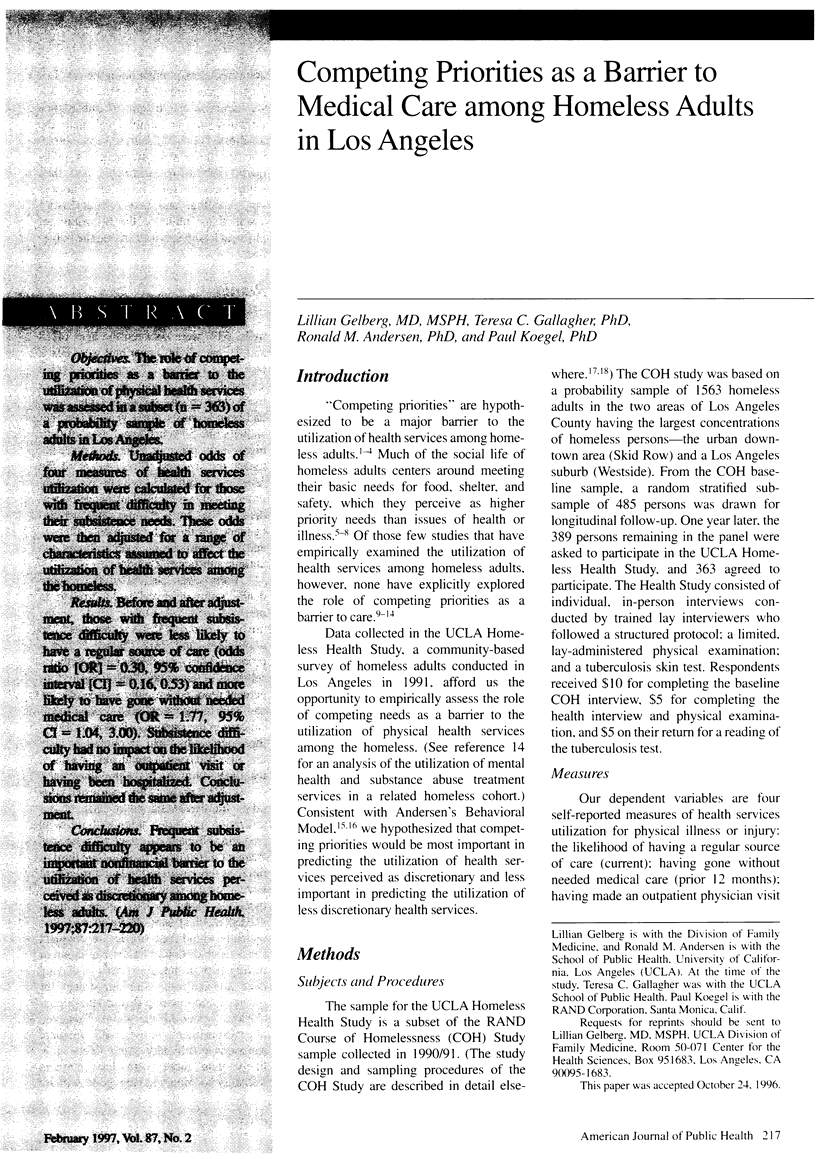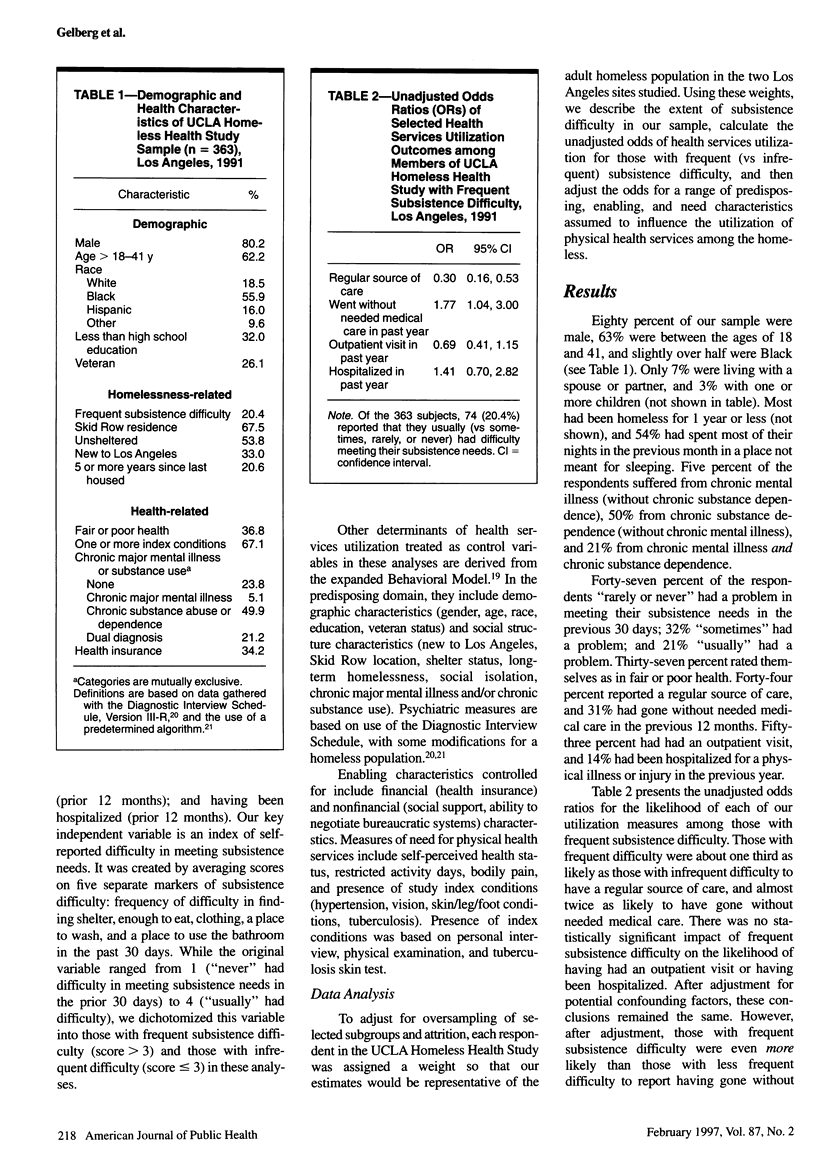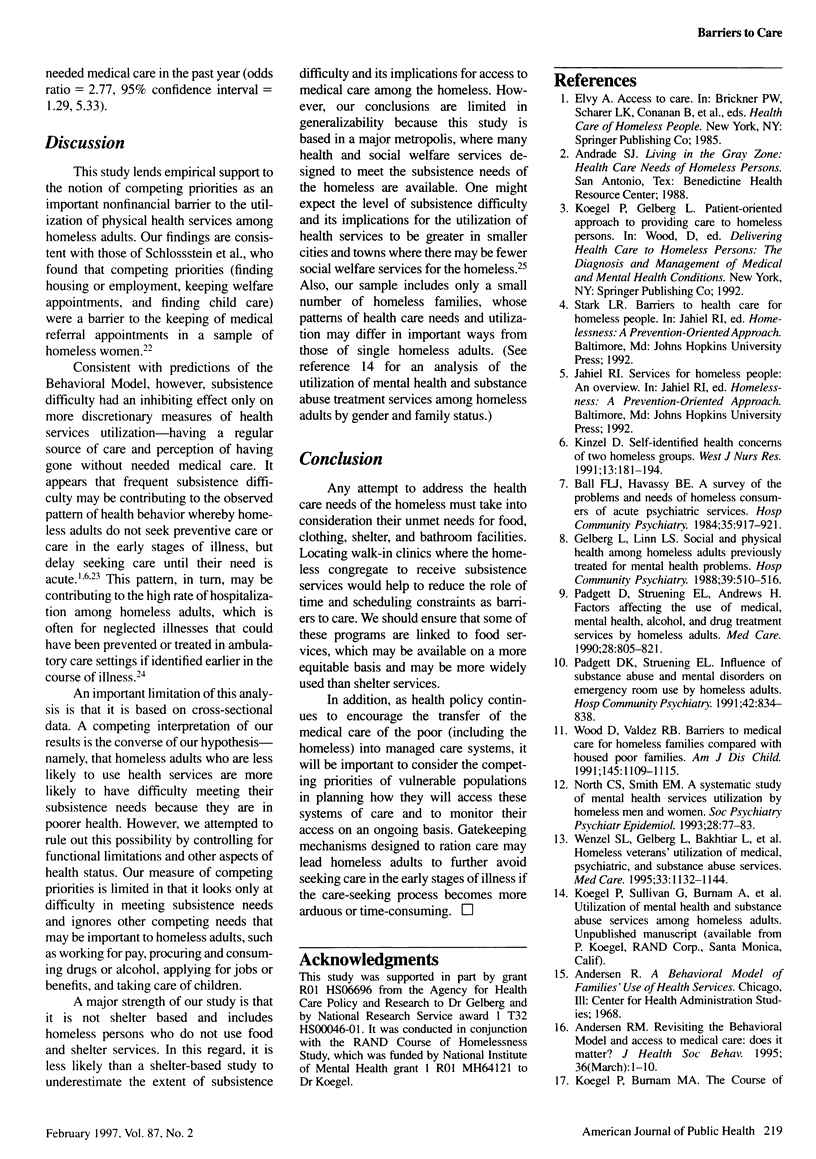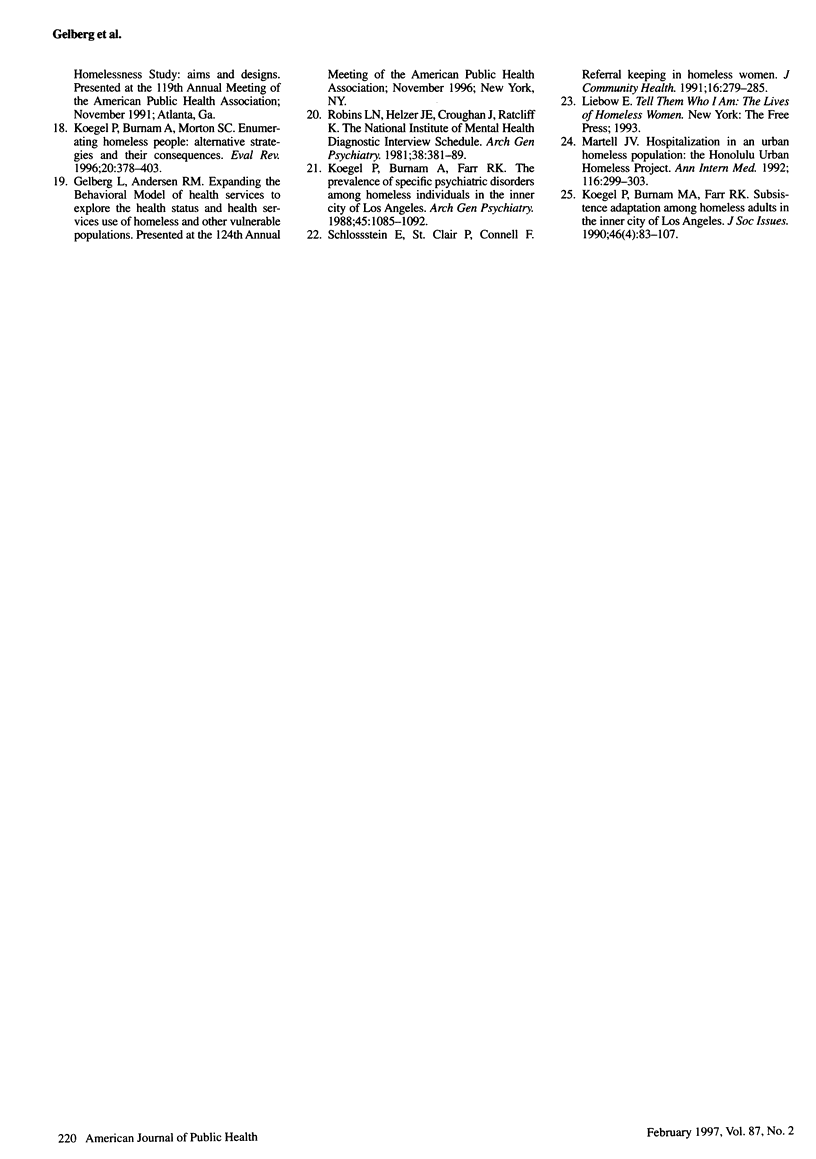Abstract
OBJECTIVES: The role of competing priorities as a barrier to the utilization of physical health services was assessed in a subset (n = 363) of a probability sample of homeless adults in Los Angeles. METHODS: Unadjusted odds of four measures of health services utilization were calculated for those with frequent difficulty in meeting their subsistence needs. These odds were then adjusted for a range of characteristics assumed to affect the utilization of health services among the homeless. RESULTS: Before and after adjustment, those with frequent subsistence difficulty were less likely to have a regular source of care (odds ratio [OR] = 0.30, 95% confidence interval [CI] = 0.16, 0.53) and more likely to have gone without needed medical care (OR = 1.77, 95% CI = 1.04, 3.00). Subsistence difficulty had no impact on the likelihood of having an outpatient visit or having been hospitalized. Conclusions remained the same after adjustment. CONCLUSIONS: Frequent subsistence difficulty appears to be an important nonfinancial barrier to the utilization of health services perceived as discretionary among homeless adults.
Full text
PDF



Selected References
These references are in PubMed. This may not be the complete list of references from this article.
- Andersen R. M. Revisiting the behavioral model and access to medical care: does it matter? J Health Soc Behav. 1995 Mar;36(1):1–10. [PubMed] [Google Scholar]
- Ball F. L., Havassy B. E. A survey of the problems and needs of homeless consumers of acute psychiatric services. Hosp Community Psychiatry. 1984 Sep;35(9):917–921. doi: 10.1176/ps.35.9.917. [DOI] [PubMed] [Google Scholar]
- Gelberg L., Linn L. S. Social and physical health of homeless adults previously treated for mental health problems. Hosp Community Psychiatry. 1988 May;39(5):510–516. doi: 10.1176/ps.39.5.510. [DOI] [PubMed] [Google Scholar]
- Kinzel D. Self-identified health concerns of two homeless groups. West J Nurs Res. 1991 Apr;13(2):181–194. doi: 10.1177/019394599101300203. [DOI] [PubMed] [Google Scholar]
- Koegel P., Burnam M. A., Farr R. K. The prevalence of specific psychiatric disorders among homeless individuals in the inner city of Los Angeles. Arch Gen Psychiatry. 1988 Dec;45(12):1085–1092. doi: 10.1001/archpsyc.1988.01800360033005. [DOI] [PubMed] [Google Scholar]
- Martell J. V., Seitz R. S., Harada J. K., Kobayashi J., Sasaki V. K., Wong C. Hospitalization in an urban homeless population: the Honolulu Urban Homeless Project. Ann Intern Med. 1992 Feb 15;116(4):299–303. doi: 10.7326/0003-4819-116-4-299. [DOI] [PubMed] [Google Scholar]
- North C. S., Smith E. M. A systematic study of mental health services utilization by homeless men and women. Soc Psychiatry Psychiatr Epidemiol. 1993 Apr;28(2):77–83. doi: 10.1007/BF00802096. [DOI] [PubMed] [Google Scholar]
- Padgett D. K., Struening E. L. Influence of substance abuse and mental disorders on emergency room use by homeless adults. Hosp Community Psychiatry. 1991 Aug;42(8):834–838. doi: 10.1176/ps.42.8.834. [DOI] [PubMed] [Google Scholar]
- Padgett D., Struening E. L., Andrews H. Factors affecting the use of medical, mental health, alcohol, and drug treatment services by homeless adults. Med Care. 1990 Sep;28(9):805–821. doi: 10.1097/00005650-199009000-00010. [DOI] [PubMed] [Google Scholar]
- Robins L. N., Helzer J. E., Croughan J., Ratcliff K. S. National Institute of Mental Health Diagnostic Interview Schedule. Its history, characteristics, and validity. Arch Gen Psychiatry. 1981 Apr;38(4):381–389. doi: 10.1001/archpsyc.1981.01780290015001. [DOI] [PubMed] [Google Scholar]
- Schlossstein E., St Clair P., Connell F. Referral keeping in homeless women. J Community Health. 1991 Dec;16(6):279–285. doi: 10.1007/BF01324513. [DOI] [PubMed] [Google Scholar]
- Wenzel S. L., Bakhtiar L., Caskey N. H., Hardie E., Redford C., Sadler N., Gelberg L. Homeless veterans' utilization of medical, psychiatric, and substance abuse services. Med Care. 1995 Nov;33(11):1132–1144. doi: 10.1097/00005650-199511000-00006. [DOI] [PubMed] [Google Scholar]
- Wood D., Valdez R. B. Barriers to medical care for homeless families compared with housed poor families. Am J Dis Child. 1991 Oct;145(10):1109–1115. doi: 10.1001/archpedi.1991.02160100041021. [DOI] [PubMed] [Google Scholar]


